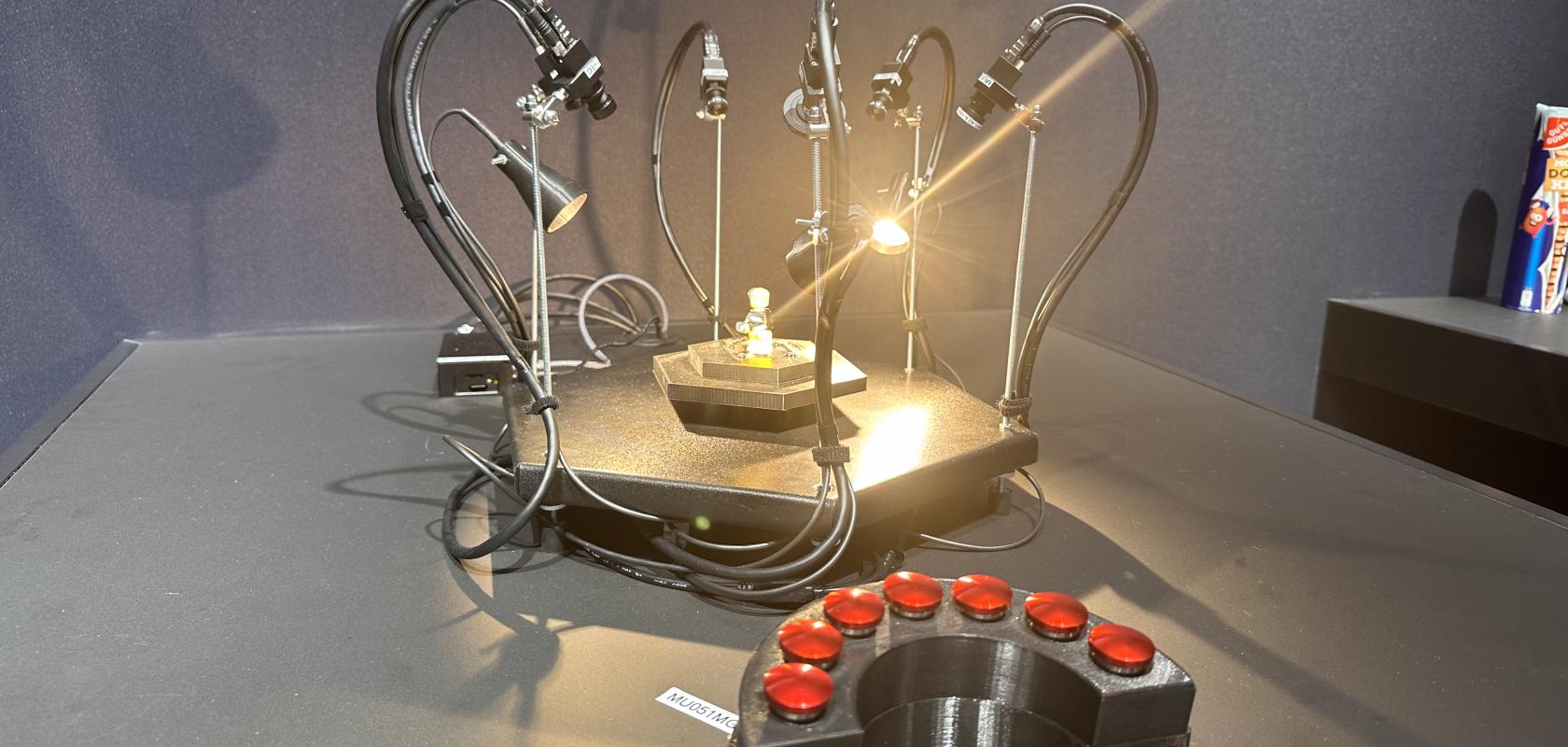XIMEA’s camera technologies have fast developed a reputation for impressive results in a range of contexts. “From the smallest to the tallest” is how Key Account Manager Jan-Hendrik Budde succinctly describes it.
Evidence of this was plentiful at the Munster, Germany-based organisation’s booth at VISION 2024. The company has a well-regarded research and development hub in Slovakia that is used to tackling complex projects and smaller-run customisation opportunities. At its core, XIMEA’s focus on industrial and scientific cameras and imaging solutions that use CMOS and sCMOS sensors, combined with high-bandwidth USB3, Thunderbolt and high bandwidth PCIe interfaces, is building a strong base of innovative technology.
For example, the iTOF and RGB Fusion, using XIMEA Nvidia Jetson Orin NX carrier board on display, creates a 3D map of an object. “We wanted to create a coloured 3D map – a 3D-point cloud – overlayed with a normal RGB camera image,” says Budde. “We extracted all the 3D information, allowing us to continue processing the data.” It’s a new development that’s not yet in the market, but should be ready sometime later next year.
Of course, XIMEA’s reputation for scaling down was always likely to be a highlight of the presentations, and visitors weren’t disappointed. Its xiMU cameras are among the smallest in the industrial vision market, with sensor options including 5Mpix and 19,6Mpix with a USB3 interface (rolling- and global shutter versions are available).
Its Thunderbolt™ 2 enabled cameras (xIX line up) currently include models with the newest sensors such as Sony’s IMX661 (XIMEA model: MX1276xG-SY-X4G3-FF) and recently released Sony’s IMX811 (XIMEA model: MX2457xR-SY-X4G3-FF). Both models are further equipped with an active EF-mount interface for control of dynamic aperture and focus. With an overall weight below 500g, these cameras still fit the payload requirements of professional UAV such as drones, fixed wings and planes.
“The main advantage we are demonstrating here at VISION is an extraordinary high resolution – enabling recording approx. 246 megapixel on a rolling shutter compact camera (MX2457xR-SY-X4G3-FF),” says Budde. “Imagine you're mounted on a drone, flying a height of a few hundred metres – you don't care whether there are moving cars on the ground or some plants that are moving. You just need to extract information from the ground, categorise it and use it to improve the efficiency of the farming process, for instance.”
It’s clear it could also add value to a range of inspection settings. Budde confirms the company is getting more and more requests for aerial mapping or inspection, but often with a high dynamic factor in the movement of the object.
In a separate demonstration, he showed Imaging & Machine Vision Europe a solution based on a global shutter, where you don't care anymore about any movements because all pixels are shut down at the same time.
“With every pixel shut down at the same time, you can freeze the moment, hence avoiding rolling shutter effects, and motion blur is reduced to a minimum. You could use it in a drone or on a fixed wing, flying at a very low altitude close to the ground, such as 100 metres, or even below 20 metres. I think this could be perfect for farming, where you might need to identify plant diseases, or would like to optimise resources such as water- and mineralisation management.” We agree, but can also see a case for a wider range of inspection scenarios, such as semiconductor inspection.
“Most of our projects are customer-driven,” says Budde. “It often starts as an OEM project, and we then scale out to see if the idea might be of interest to more of our customers. Our strategy is that we can provide about 50% off-the-shelf, so we still reserve capacity for OEMs. If one of our customers comes with a request for, perhaps, just 50-100 units the first year, we can look at that. Our work is always ultimately application-driven.
“I guess we're one of the first companies really innovating with the integration of these sensors.”
Another innovation on show was a Thunderbolt-based solution for PCIe camera models to overcome the missing hot pluggable of PCIe cameras. “If a PCIe based imaging system breaks, you have to shut down everything. However, at the show, we are demonstrating a PCIe- (X4G3) based camera that is directly connected to a standard laptop utilising Thunderbolt.”
Perhaps the piece de resistance was an impressive display simulating a fast movement, which is often an inspection issue. Of course, this being XIMEA, the famous Lego made a repeat appearance (visitors to VISION 2022 will recall what we are talking about). This time, a set of xiMU subminiature cameras were capturing 10 rotations per second, processed on the great-value Raspberry Pi. “From the aspect of providing low-price embedded systems (such as Raspberry Pi5), I think this is a perfect camera demonstration,” says Budde. “This is still based on the rolling shutter (and global shutter), but it’s still super sharp. To be honest, I never expected results as good as this when we first started work on it,” he says.
“These USB based units are super-tiny (15x15 mm footprint). They provide the power supply, the data, as well as triggering our trigger and synchronisation. The idea is that customers can integrate these cameras into running setups in areas such as robotics or medical applications, as they are very light (about 3g).”
The company, now in business more than 25 years, supports more than 30 of the most popular machine-vision libraries, including Mathworks Matlab, MVTec HALCON and OpenCV. Its XIMEA CamTool is a cross-platform viewer application suitable for rapid prototyping with scripting engine and custom plugins. It’s evidence of the joined-up approach to partners’ needs, and builds on a continuing successful roadmap of launches, including the 2024 released xiB- 64 models based on Gpixles Gsprint lineup, CB209xG-GP-X8G3-xxx, CB100xG-GP-X8G3-xxx and CB024xG-GP-X8G3-xxx, offering resolutions up to 21 megapixels at speeds of 300 frames per second. The demonstrations on display at VISION 2024 suggest there’s much more to come…


